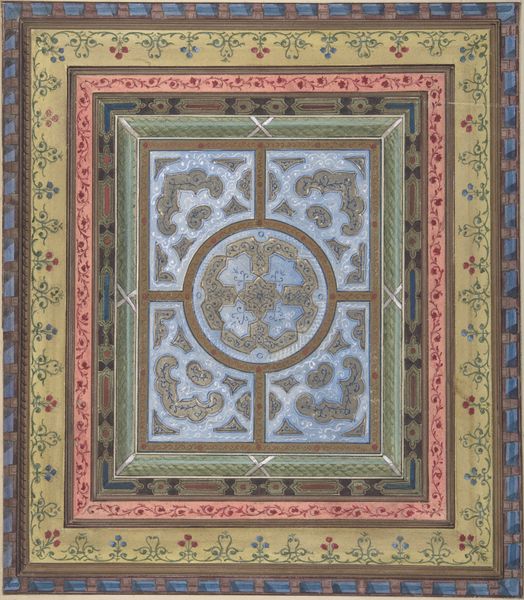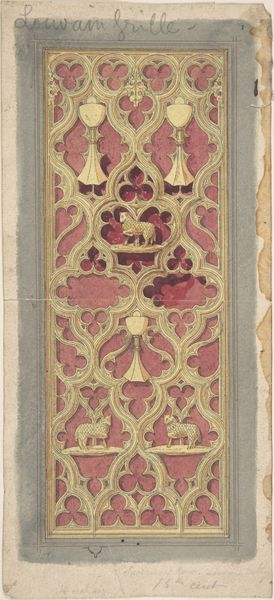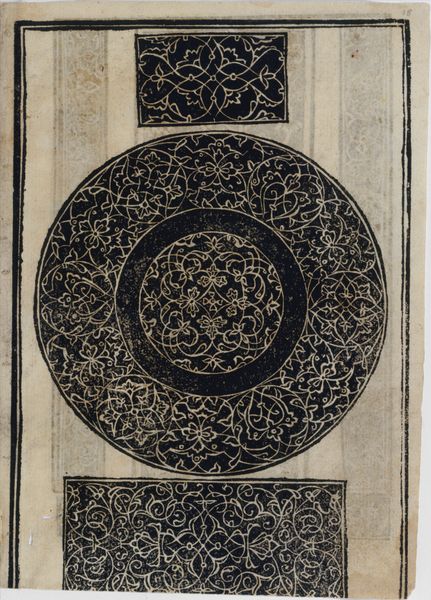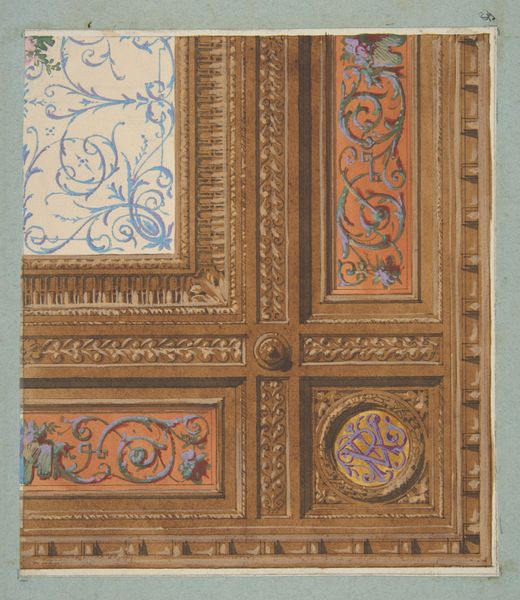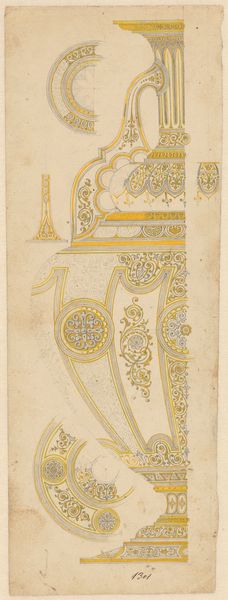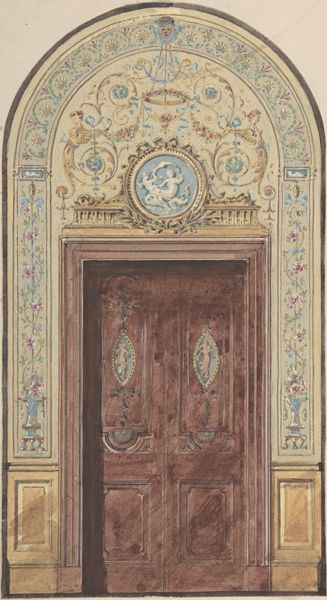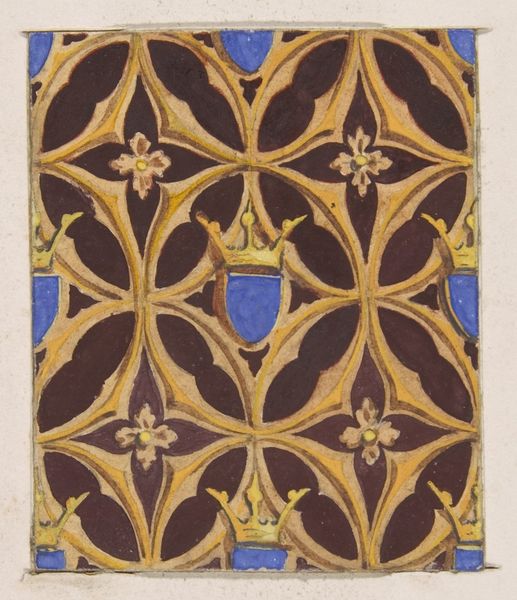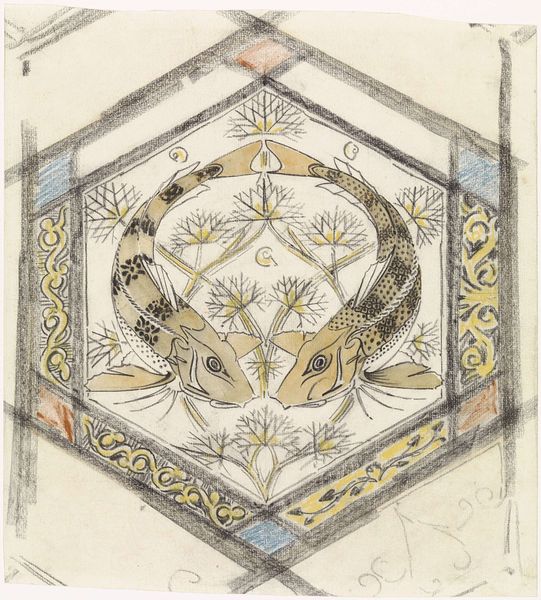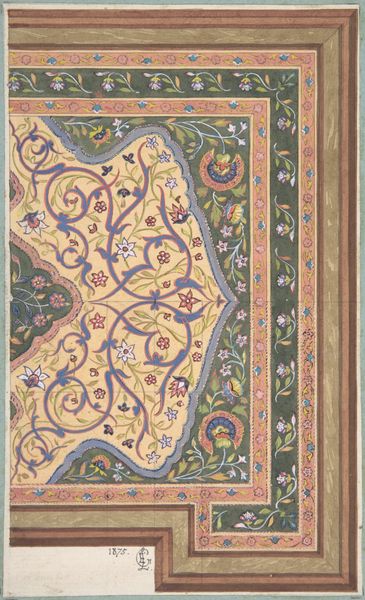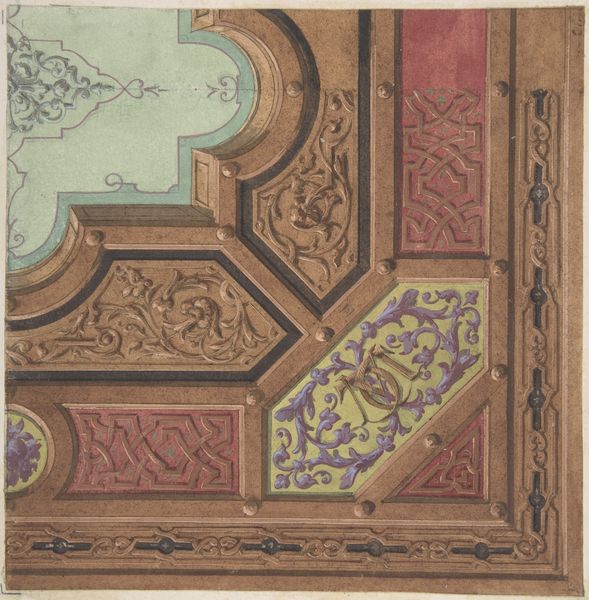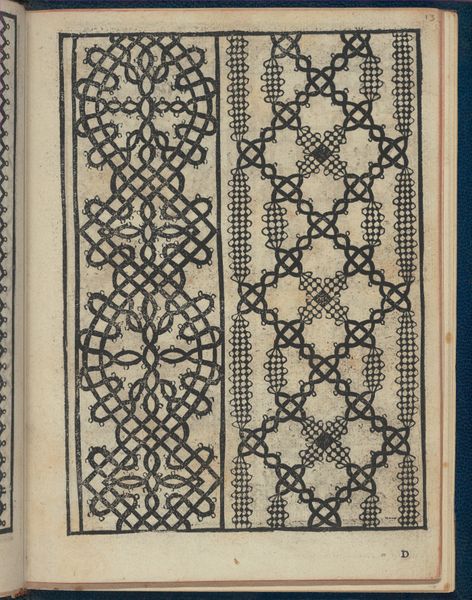
Design for the decoration of a ceiling with rinceaux 1830 - 1897
0:00
0:00
drawing, print, watercolor
#
drawing
# print
#
11_renaissance
#
watercolor
#
decorative-art
#
decorative art
#
watercolor
Dimensions: Overall: 10 5/8 x 8 3/8 in. (27 x 21.3 cm) image: 5 3/4 x 4 9/16 in. (14.6 x 11.6 cm)
Copyright: Public Domain
Editor: Here we have Jules-Edmond-Charles Lachaise's "Design for the decoration of a ceiling with rinceaux," likely created sometime between 1830 and 1897. It's a watercolor and gouache drawing. I'm really drawn to the detailed ornamentation; it makes me think of royal interiors, maybe Versailles? How might its historical context shape how we see it today? Curator: That's a very perceptive initial reaction! This design speaks volumes about 19th-century artistic trends and the patronage system. Decorative arts like this were not simply about aesthetics; they were powerful markers of social status. Aristocrats and the burgeoning middle class displayed such elaborate designs to project wealth and refined taste. Editor: So, it's less about pure artistic expression and more about social climbing through display? Curator: Precisely. Think about the museums that eventually showcased such works. They essentially democratized access, but also solidified a particular hierarchy of taste. The rinceaux motifs, those flowing, stylized leaves, link back to classical antiquity, invoking a lineage of power and prestige. Lachaise, as the designer, was therefore complicit in that reinforcement of hierarchy and values. Considering this, what political message do you see this design conveying? Editor: I hadn't considered that political layer, but the classical references and focus on wealth... It definitely screams established power. It also prompts the question, for whom was this level of craftsmanship intended, and who could afford it? Was this decorative style available only to the dominant societal classes, or was it a feature in more public venues as well? Curator: An excellent point! Examining decorative art like this reveals how artistic choices became tools for social differentiation, and in many ways, the display of them solidified cultural dominance in 19th-century society. It provides such insight into understanding that the way things look can reflect deeply ingrained values of society as a whole. Editor: Absolutely, seeing it that way shifts the perspective, I hadn’t realized the political charge behind the ornamentation at first glance. Thanks for showing how social standing impacts art's place in history.
Comments
No comments
Be the first to comment and join the conversation on the ultimate creative platform.
